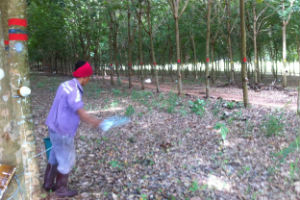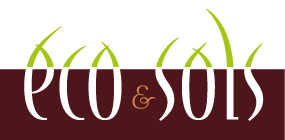 Sustainable fertiliser use for rubber plantations
Sustainable fertiliser use for rubber plantations
The management of inputs and soil fertility is of increasing concern for rubber plantations, in particular in Thailand, the leading rubber producer. In areas where rubber trees have been cultivated since the start of the 20th century, the successive rotations have raised the question of the long-term loss of soil fertility. In areas with new rubber plantations, the plantations are set up on soils that have been degraded by the intensive cultivation of sugar cane or manioc over many years. The Yara project sets out to study the effect of mineral fertilisers on the yield and quality of latex and on the general functioning of a rubber plantation. It brings together the scientific skills of the Hevea Research Platform (HRPP) and LMI LUSES platform in a multifactorial field experiment and socioeconomic and agronomic surveys of practices in village plantations.
Aims
General
- Improve knowledge about the nutrition of rubber plantations in production
- Help to design sustainable fertiliser use strategies for rubber plantations
Specific
- Understand how and why planters manage their fertiliser use
- Analyse the effect of fertilisers on the yield and quality of the latex
- Quantify the flows and balances of N, P and K and their interactions with the net primary production (NPP) of a rubber plantation
Research topics
- What are the agroeconomic determinants of fertiliser use by planters in Thailand ?
- Does amendment have a direct effect in the short term on the yield of trees by stimulating the transport of sugar to the laticiferous cells ?
- Does amendment have an indirect effect in the long term on the yield of trees by increasing the NPP ?
- Do N, P and K contribute to the latex quality ?
Involvement of Eco&Sols
The Eco&Sols Joint Research Unit is involved in the project in the study of the relationships between functional plant diversity, soil organisms and biogeochemical cycles by identifying the functional traits of the plants and the soil nematodes (trophic groups) which are associated with beneficial effects, in particular for the bioavailability of nutrients (N and P) for the main crop.
Date
Octobre 2013- Avril 2017
Partners
- UMR IATE
- Laboratory for Biochemistry and Technology of Natural Rubber (Cirad / Kastesart University)
- UPR Systèmes de Pérennes (Cirad)
- Station expérimentale de Sitthiporn Kritsadakon (Kasetsart University)
Funding
- Operation : Société Yara International
- Agronomic management of the test : Kasetsart University
- Human resources : Cirad (5 chercheurs), IRD (1 chercheur), Kasetsart University (2chercheurs, 1 doctorante)
Contact
Frederic Gay, Eco&Sols, CIRAD Montpellier
e-mail :






